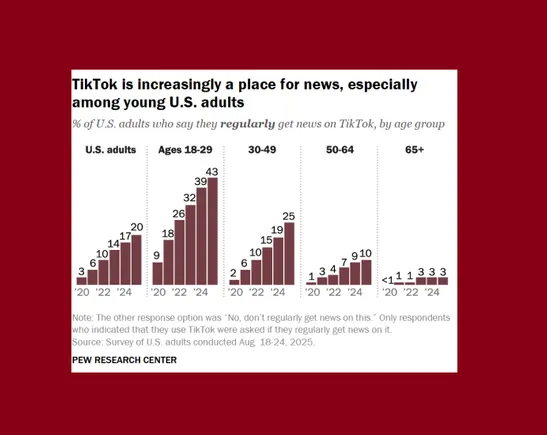An inspiring mission statement is essential for your business plan, as it defines your organization’s core purpose and values. It helps guide strategic decisions during nurturing unity among employees and loyalty from customers. Crafting a clear and concise mission statement can be challenging, but examining effective examples can provide valuable insight. You’ll want to make sure your mission resonates with your audience. Now, let’s explore some notable mission statements that can inspire your own.
Key Takeaways

- Include powerful examples like Tesla’s focus on sustainability to inspire your mission statement.
- Emphasize community impact, similar to Starbucks’ nurturing approach, to resonate with customers.
- Highlight social responsibility, as Warby Parker does, to attract like-minded partners and investors.
- Ensure your mission reflects core values and purpose, fostering employee engagement and loyalty.
- Keep your mission statement concise and memorable, ideally one to three sentences long, for clarity.
What Is a Mission Statement and Its Purpose?

A mission statement is an important element that defines your organization’s purpose and direction. It clearly communicates what your company does, who it serves, and why it exists, providing clarity to both employees and customers.
Effective mission statement examples for business are typically concise and inspirational, allowing them to resonate with all stakeholders. This guiding principle helps align strategies and goals with your organization’s core values and culture, enhancing brand identity and customer perception.
Furthermore, a well-crafted mission statement serves as a motivational tool that can inspire employee engagement and loyalty. Regularly revisiting and updating your mission statement is vital to guarantee its relevance, especially when your organizational goals or target audiences shift.
Benefits of a Mission Statement

Comprehending the benefits of a mission statement can greatly impact your organization’s success. A well-crafted mission statement clarifies your purpose, guiding strategic decisions and actions aligned with core values.
It boosts employee engagement by nurturing a sense of belonging and purpose, leading to increased productivity and job satisfaction. Companies with clear mission statements often experience stronger customer loyalty, as these statements reflect commitments to values that resonate with their target audience.
Moreover, a mission statement unifies team members around shared goals, driving collaboration and innovation. Organizations that articulate their mission are likewise better positioned to attract like-minded partners and investors, effectively conveying the company’s vision and values.
For inspiration, consider the best mission statement examples available.
Characteristics of an Effective Mission Statement

To create an effective mission statement, it’s vital that it captures the essence of your organization in a clear and concise manner.
Ideally, your statement should be one to three sentences long, making it easy to understand and memorable for stakeholders. It must reflect your core values and purpose, resonating with both employees and customers to promote alignment with your company’s goals.
A strong sample of mission statement articulates who you serve, what you offer, and why you exist, providing a foundation for decision-making.
In addition, your mission statement should inspire and motivate, encouraging a sense of purpose among employees and attracting like-minded partners.
Regularly revisiting and updating it’s important to keep it relevant to evolving goals and market conditions.
52 Mission Statement Examples

Effective mission statements can serve as a guiding light for organizations, showcasing their purpose and values in a way that resonates with both employees and customers. Great mission statements clearly articulate what the organization does, who it serves, and the value it provides.
For instance, Tesla‘s mission to “accelerate the world’s shift to sustainable energy” reflects its commitment to innovation and sustainability. Similarly, Starbucks aims to “nurture the human spirit – one person, one cup, and one neighborhood at a time,” emphasizing community engagement.
Companies like Patagonia and Warby Parker demonstrate strong mission statements focused on environmental sustainability and social impact, respectively. Regularly updating these statements guarantees they remain relevant and aligned with evolving organizational goals and audience needs.
How to Create a Mission Statement That Resonates

Creating a mission statement that resonates starts with a clear comprehension of your organization’s purpose and values.
Begin by articulating what your organization does, who it serves, and why it exists, ensuring the statement reflects your core values.
Keep it concise and memorable—ideally one to three sentences—so it’s easy for employees and customers to recall.
Involve key stakeholders in the creation process to gather diverse perspectives and cultivate ownership.
Regularly revisit and update the mission statement to align with changing goals and market dynamics.
Focus on crafting an inspiring and actionable statement that motivates employees and resonates with customers by highlighting the tangible benefits your organization delivers.
Review mission samples in business plans for further guidance.
Frequently Asked Questions

What Is a Good Mission Statement for a Business Plan?
A good mission statement clearly defines your business’s purpose, outlining what you do, who you serve, and why you exist.
It should resonate with both employees and customers, reflecting your core values. Aim for concise language that’s specific and actionable, avoiding vagueness.
Regularly revisit the statement to guarantee it aligns with your evolving goals and market conditions. This helps guide decision-making and keeps your organization focused on its unique identity and offerings.
What Are Some Good Examples of Mission Statements?
Some good examples of mission statements include Tesla’s aim to “accelerate the world’s shift to sustainable energy,” which highlights environmental responsibility.
Starbucks focuses on community, stating, “to inspire and nurture the human spirit – one person, one cup, and one neighborhood at a time.”
Nike emphasizes inclusivity with “to bring inspiration and innovation to every athlete in the world,” whereas Google seeks to organize information, and the American Red Cross aims to alleviate human suffering during emergencies.
What Is an Example of a Mission Vision of a Business?
An example of a mission vision for a business could be a technology company stating, “To innovate and improve everyday life through state-of-the-art solutions.”
This mission emphasizes the company’s commitment to progress and enhancing customer experiences. It captures the essence of their goals as well as inspiring employees and stakeholders alike.
What Is an Example of a Mission Goal?
An example of a mission goal could be a tech company aiming to develop and launch three innovative software products within two years.
This goal aligns with its broader mission to improve digital communication. By setting a measurable target, you can track progress and adjust strategies accordingly.
Such a mission goal not merely provides clear direction for your team but additionally nurtures motivation by establishing specific objectives to aim for, ensuring alignment with the overall mission.
Conclusion

In conclusion, a well-crafted mission statement is crucial for your business plan, as it defines your organization’s core purpose and values. It serves multiple functions, such as guiding strategic decisions and promoting unity among employees. By examining effective examples and comprehending the key characteristics of a strong mission statement, you can create one that resonates with both your team and customers. Investing time in this process can greatly improve your business’s clarity and direction.
Image Via Envato







